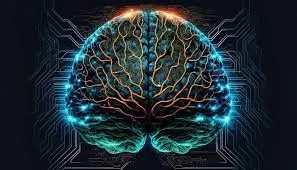Brain Tracking has become an increasingly important field in modern science. As we learn more about how our brain functions, researchers are discovering fascinating ways to monitor and understand our mental activity. This article will explore the amazing world of brain tracking and help you understand how scientists can actually “watch” our brains in action.
What is Brain Tracking?
Brain tracking refers to the methods scientists use to monitor brain activity and understand how different parts of our brains work together. Think of it like having a special camera that can see inside your head while you’re thinking, feeling emotions, or doing everyday tasks.
The human brain contains billions of nerve cells called neurons that communicate using tiny electrical signals. When we track these signals, we can see which parts of the brain are active during different activities. It’s similar to watching a city from high above at night – you can see patterns of lights showing where people are most active.
Common Brain Tracking Methods
EEG (Electroencephalography)
EEG tracking is one of the oldest and most common ways to monitor brain activity. Scientists place small sensors on a person’s head that can detect electrical signals from the brain. These sensors work like tiny microphones listening to the brain’s “conversation.”
When you’re having an EEG, you wear a special cap with many sensors attached to it. These sensors pick up the electrical activity happening in your brain and show it as wavy lines on a computer screen. Different types of brain activity create different patterns in these waves.
fMRI (Functional Magnetic Resonance Imaging)
fMRI scanning is like taking pictures of your brain while it’s working. This method uses powerful magnets to track blood flow in different parts of the brain. When a part of your brain is working hard, it needs more oxygen, so more blood flows to that area.
During an fMRI scan, you lie still inside a large machine while it takes pictures of your brain. These pictures show which parts of your brain are using the most oxygen, helping scientists understand which areas are most active during different tasks.
Applications of Brain Tracking
Medical Uses
Brain tracking technology helps doctors understand and treat many conditions:
- Detecting seizures and understanding epilepsy
- Monitoring sleep disorders
- Diagnosing brain injuries
- Understanding mental health conditions
- Helping people with paralysis control computers using their thoughts
Research Applications
Scientists use brain tracking to learn more about:
- How we learn and remember things
- What happens in our brains during sleep
- How emotions affect our thinking
- Why certain mental health conditions develop
- How different parts of the brain work together
Consumer Applications
Now, some companies are making brain-tracking devices for everyday use:
- Meditation helpers that show when your mind is calm
- Games you can control with your thoughts
- Devices that help you improve your focus
- Sleep monitors that track brain activity during rest
How Brain Tracking Works
The Science Behind the Technology
Our brains use both electrical signals and chemical messages to work. Brain tracking technology can detect these signals in different ways:
- Electrical Activity: EEG machines measure the electrical pulses that neurons send to communicate
- Blood Flow: fMRI scanners watch how blood moves through the brain
- Chemical Changes: Some methods track changes in brain chemistry
- Brain Waves: Special equipment can detect different types of brain wave patterns
Types of Brain Signals
Scientists look for different kinds of brain waves:
- Delta waves: Present during deep sleep
- Theta waves: Active during drowsiness
- Alpha waves: Show up when you’re relaxed
- Beta waves: Appear during active thinking
- Gamma waves: Happen during complex problem-solving
Benefits of Brain Tracking
Personal Benefits
Understanding your brain activity can help you:
- Improve your sleep quality
- Manage stress better
- Enhance your focus and concentration
- Understand your learning style
- Develop better habits
Medical Benefits
Doctors use brain tracking to:
- Find problems early
- Plan better treatments
- Monitor recovery
- Understand how medicines work
- Help prevent certain conditions
Scientific Benefits
Researchers gain valuable insights about:
- How the brain develops
- What causes different brain conditions
- How to treat brain disorders
- Ways to improve learning
- How memories form
Challenges in Brain Tracking
Technical Challenges
Scientists face several difficulties:
- Getting clear signals through the skull
- Dealing with movement that affects readings
- Making equipment more comfortable
- Creating more accurate measurements
- Making the technology more affordable
Practical Challenges
Other important issues include:
- Keeping private information safe
- Making sure the equipment is easy to use
- Training people to use the technology
- Understanding what the data means
- Making the technology available to more people
The Future of Brain Tracking
Upcoming Technologies
Scientists are working on exciting new developments:
- Smaller, more comfortable devices
- More accurate readings
- Wireless systems
- Cheaper equipment
- Easier-to-use technology
Potential Applications
In the future, brain tracking might help:
- Control computers directly with thoughts
- Treat mental health conditions better
- Help people with disabilities communicate
- Improve learning and education
- Create better virtual reality experiences
Privacy and Ethics
Important Considerations
As brain tracking becomes more common, we need to think about:
- Keeping brain data private
- Using the information responsibly
- Making sure everyone has access to the technology
- Protecting people’s rights
- Using the technology safely
Safety Guidelines
Scientists and doctors follow strict rules to:
- Protect patient privacy
- Ensure safe use of equipment
- Maintain data security
- Follow ethical guidelines
- Keep information confidential
Conclusion
Brain tracking is an amazing field that helps us understand how our minds work. As technology improves, we’ll learn even more about our brains and find new ways to use this knowledge to help people. Whether it’s treating medical conditions, improving learning, or helping people communicate better, brain tracking has an exciting future ahead.
Remember that while this technology is powerful, it’s just one tool in understanding how our amazing brains work. As we continue to learn more, we’ll find even better ways to use brain tracking to improve our lives and help others.
Resources for Learning More
If you’re interested in learning more about brain tracking, you can:
- Talk to doctors or scientists who work with these technologies
- Read scientific magazines and websites
- Visit science museums with brain exhibits
- Watch educational videos about the brain
- Join online communities interested in neuroscience
The more we learn about our brains, the better we can understand ourselves and help others. Brain tracking technology is just one exciting way we’re unlocking the mysteries of the human mind.
Frequently Asked Questions About Brain Tracking
1. What exactly is brain tracking and how does it work?
Brain tracking is like having a special camera for your mind. It uses different technologies to watch brain activity by measuring electrical signals, blood flow, or chemical changes in your brain. The most common methods are EEG, which uses sensors on your head to detect electrical activity, and fMRI, which uses magnetic fields to see which parts of your brain are active by tracking blood flow.
2. Is brain tracking safe for regular use?
Yes, the standard methods of brain like EEG and fMRI are very safe. They don’t use harmful radiation or chemicals. EEG simply listens to your brain’s natural electrical signals, while fMRI uses magnetic fields similar to those in everyday magnets. However, you should always have brain tracking done by trained professionals using approved equipment.
3. Can brain tracking really read my thoughts?
Not exactly. Brain tracking can show which parts of your brain are active and some general patterns of activity, but it can’t decode specific thoughts or see images in your mind. It’s more like seeing which rooms in a house have their lights on rather than knowing exactly what’s happening inside each room.
4. How much does brain tracking cost?
The cost varies widely depending on the type of tracking. Medical procedures like EEG or fMRI can cost hundreds or thousands of dollars, but insurance often covers them when medically necessary. Consumer devices for simple brain wave monitoring can range from $100 to $500, though their accuracy might not match medical-grade equipment.
5. Can brain tracking help with mental health conditions?
Brain monitoring can be very helpful for understanding and treating various mental health conditions. It helps doctors see how different treatments affect brain activity and can guide treatment plans. However, it’s just one tool among many and should be used alongside other medical approaches, not as a replacement.
6. How long does a brain tracking session typically last?
The length varies by type. An EEG might take 30 minutes to 2 hours, while an fMRI usually takes 30-60 minutes. Consumer devices for meditation or sleep tracking can be used for any length of time. Medical monitoring might sometimes continue for hours or days to track specific conditions.
7. Do I need special training to understand tracking results?
Basic consumer devices often come with user-friendly apps that explain your results simply. However, medical tracking results need to be interpreted by trained professionals. The patterns and data can be complex, requiring special knowledge to understand their meaning accurately.
8. Can children use brain tracking technology?
Yes, brain is safe for children when properly administered. It’s often used to study learning disabilities, attention disorders, and other childhood conditions. However, children might need extra preparation and support to feel comfortable with the equipment, especially for medical procedures.
9. What’s the difference between medical and consumer brain devices?
Medical devices provide much more detailed and accurate information but require professional operation and interpretation. They’re also more expensive and usually only available in medical settings. Consumer devices are simpler, more affordable, and easier to use, but provide more basic information and might be less accurate.
10. How accurate is brain technology?
The accuracy depends on the technology used and its purpose. Medical-grade equipment is highly accurate for its intended use when properly operated. Consumer devices can give useful general information about brain states but aren’t as precise. Factors like movement, electrical interference, and proper sensor placement can affect accuracy. It’s important to understand that even the best brain provides general patterns rather than exact thoughts or emotions.
Each of these questions touches on important aspects of brain, but remember that this field is constantly evolving. New discoveries and improvements in technology continue to expand our understanding of how the brain works and how we can better monitor its activity.



